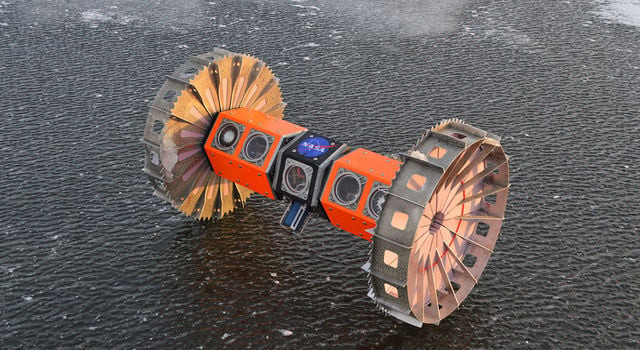NASA Tests Aquatic Rover In Antarctica Searching For Life Under Ice
The upcoming test of the rover's endurance at Australia's Casey research station is its first trial in Antarctica

PHOTO: NASA
Developed by engineers at the JPL, the Buoyant Rover for Under-Ice Exploration (BRUIE) could one day explore ice-covered lunar oceans like those on Jupiter's moon Europa and Saturn's moon Enceladus, said the JPL.
The upcoming test of the rover's endurance at Australia's Casey research station is its first trial in Antarctica.
First all-female spacewalk now later this week, says NASA
According to the JPL, there are moons throughout the solar system believed to be covered in deep oceans hidden beneath thick, frozen surfaces. Kevin Hand, JPL lead scientist on the BRUIE project, believes that these lunar oceans may be the best places to look for life in the solar system.
"The ice shells covering these distant oceans serve as a window into the oceans below, and the chemistry of the ice could help feed life within those oceans," Hand said.
The Antarctic waters are the closest Earth analog to the seas of an icy moon, which makes them an ideal testing ground for BRUIE technology, said the JPL.
The buoyant rover, one meter long and equipped with two wheels to roll along beneath the ice, can take images and collect data on the important region where water and ice meet.
NASA aims for first manned SpaceX mission in first-quarter 2020
"BRUIE will carry several science instruments to measure parameters related to life, such as dissolved oxygen, water salinity, pressure, and temperature," said Dan Berisford, JPL mechanical engineer.
NASA is already at work constructing the Europa Clipper orbiter, which is scheduled to be launched in 2025 to study Europa, laying the groundwork for a future mission that could search for life beneath the ice.



















COMMENTS
Comments are moderated and generally will be posted if they are on-topic and not abusive.
For more information, please see our Comments FAQ